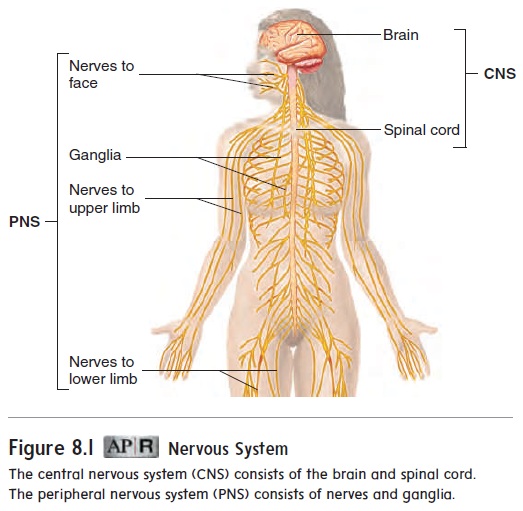Chapter: Essentials of Anatomy and Physiology: Nervous System
Central and Peripheral Nervous Systems
CENTRAL AND PERIPHERAL NERVOUS SYSTEMS
As mentioned previously, the central nervous system (CNS) consists of the brain and spinal cord (see figure 8.1). The brain is housed within the braincase; the spinal cord is in the vertebral column.
The peripheral nervous system (PNS) consists of all the nerves and ganglia outside the brain and spinal cord. The PNS collects information from numerous sources both inside and on the surface of the body and relays it by way of sensory neurons to the CNS, where one of three results is possible: The information is ignored, triggers a reflex, or is evaluated more extensively. Motor neurons in the PNS relay information from the CNS to muscles and glands in various parts of the body, regulating activity in those structures. The nerves of the PNS can be divided into two groups: 12 pairs of cranial nerves and 31 pairs of spinal nerves.

Related Topics